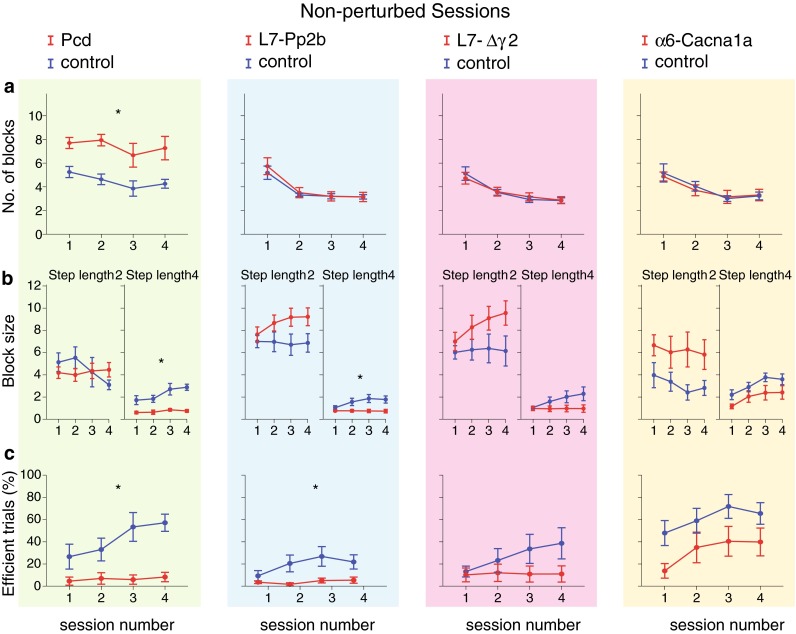Fig. 5.

Non-perturbed locomotion: walking pattern consistency and efficiency. a To estimate the consistency of the walking pattern, we calculated the mean number of blocks with steps of the same length for each trial (see Fig. 3b). Only Pcd mice changed their step lengths significantly more often than control mice. b Although some non-significant trends emerged, all cerebellar mutant mice showed a similar number of consecutive small steps (i.e., block size for small steps) compared to control mice. In contrast, with respect to large steps Pcd and L7-Pp2b mice made significantly fewer consecutive steps, keeping the average block size small. c To estimate the efficiency of their walking patterns, we calculated the percentage of trials per session, in which the maximum number of large steps or leaps was higher than that of the other steps (efficient trials). Pcd and L7-Pp2b mice showed a significantly lower rate of efficient trials per session, while L7-Δγ2 and α6-Cacna1a mice showed a trend that did not reach significance. Error bars represent SEM. Significant differences between mutant and control mice are indicated with asterisks
